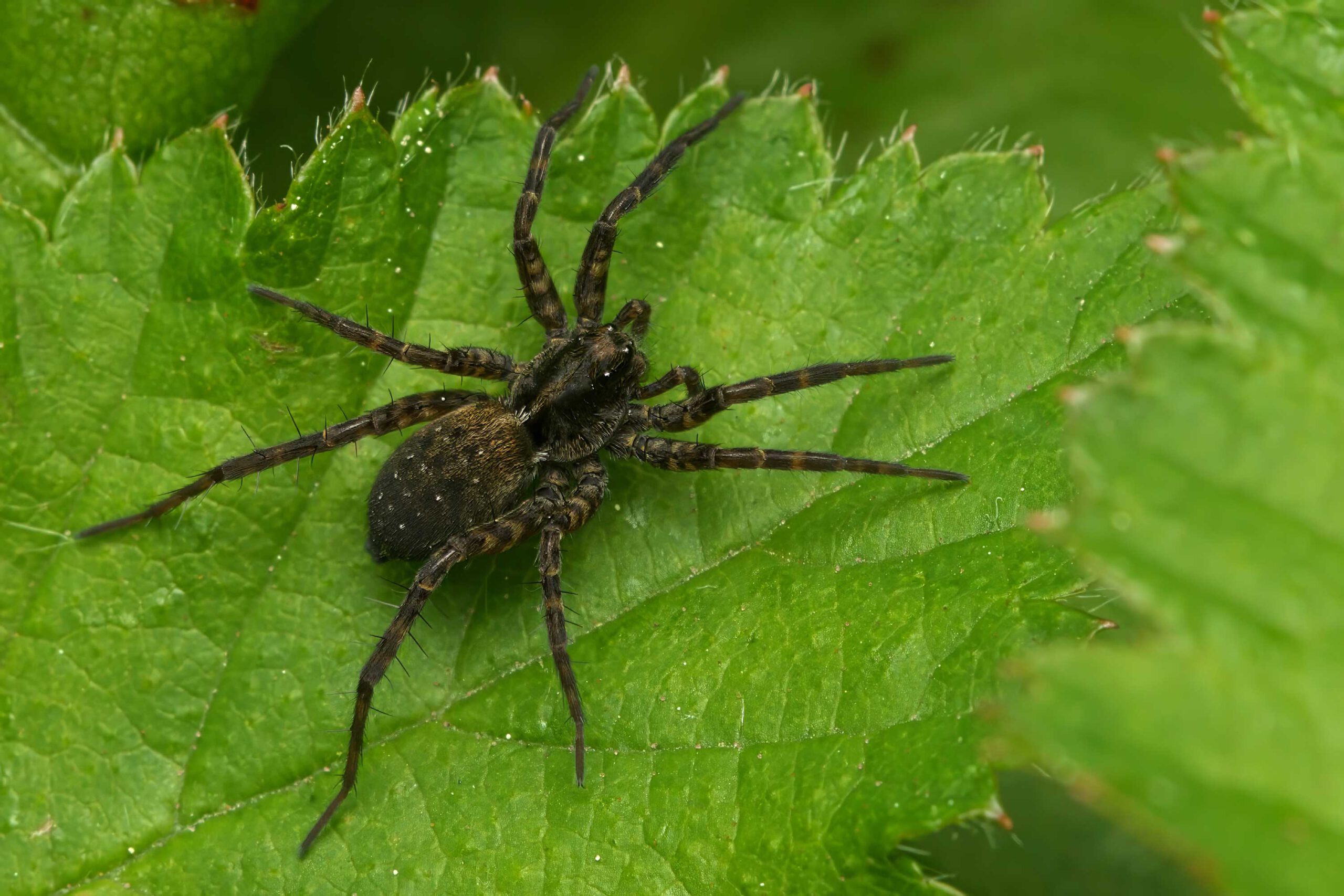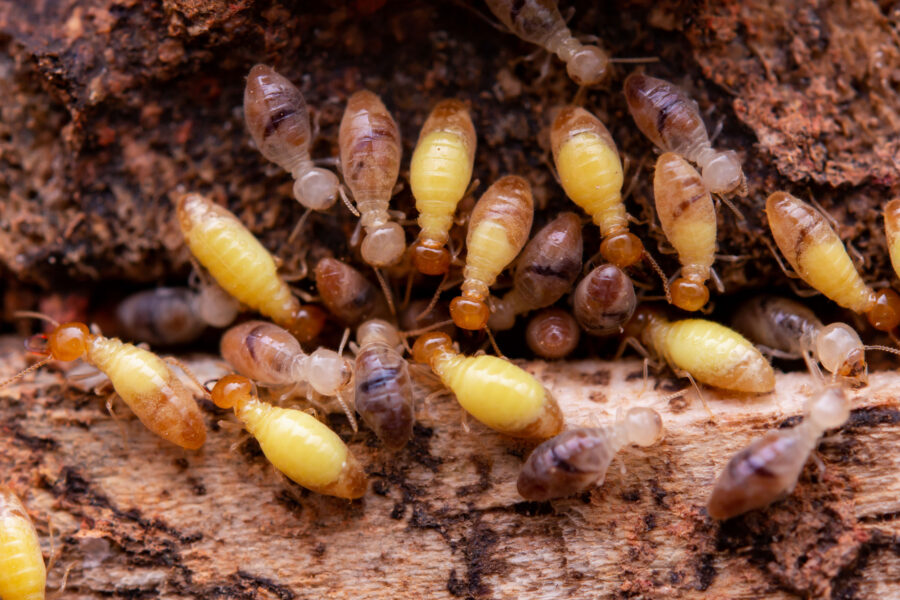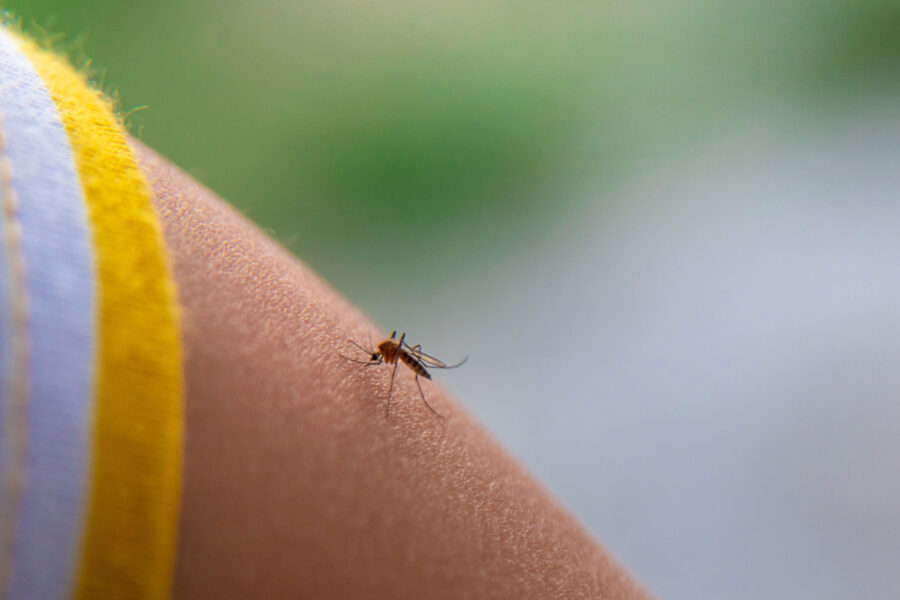Brown Recluse vs Wolf Spiders: 10 Differences You Need to Know
Spiders are a common sight in many households in Texas, and it’s important to know which ones can be potentially harmful.
The brown recluse, in particular, is known for its venomous bite that can cause serious health complications. On the other hand, the wolf spider is generally considered harmless, despite its intimidating appearance.
In this article, we will compare and contrast the wolf spider vs brown recluse, covering the following 10 differences:
- Body Shape & Size
- Behavior
- Species
- Web
- Color
- Venom / Toxicity
- Diet
- Life cycle / Reproduction
- Habitat
- Damage They Cause
Let’s get into it!
1: Body Shape & Size
One way to identify a brown recluse spider is to look for a violin-shaped marking on its back.
This is a unique characteristic that sets brown recluses apart from other spiders. They also have small, flattened bodies with long, thin legs. They are generally smaller than wolf spiders, with a body length of typically 6 to 19 millimeters, or about the size of a quarter.
Wolf spiders have more robust, hairy bodies with long legs. Their legs are adapted for running and hunting, as they are active predators that chase down their prey. They have a slightly flattened appearance but are not as flattened as brown recluse spiders.
Wolf spiders can vary in size, but they are typically larger than brown recluse spiders, with a body length that can vary between 10 to 35 millimeters.
2: Behavior
Brown recluse spiders are nocturnal and tend to hide during the day. They are not aggressive and will usually only bite when they feel threatened. They are often found in dark, secluded areas like closets, attics, and basements.
Wolf spiders are also mainly nocturnal but may be seen hunting in the early morning. They are hunters and will actively pursue prey, rather than wait for it to come to them.
They are not aggressive towards humans and like brown recluses, they will usually only bite if they feel threatened or provoked. They are often found in grassy yards or wooded areas, but may also enter homes when on the lookout for prey.
3: Species
The brown recluse spider (Loxosceles reclusa) belongs to the Sicariidae family and is found primarily in the central and southern United States.
Wolf spiders belong to the Lycosidae family which is the 4th largest spider family in the world. There are many different species of wolf spiders found throughout the world.
4: Web
There is a key difference in the webs spun by brown recluse spiders and wolf spiders.
Brown recluse spiders weave a messy-looking, loosely structured web. These webs serve as a means of capturing prey and a place of shelter, but they often go out of their web at night to hunt prey.
Wolf spiders do not spin webs for catching prey. They are active spiders that hunt for their food instead. They do not aggressively chase down their prey, but rather seek out potential
food sources and wait for insects or other small arthropods to come within range. What’s interesting is that to stay connected with other wolf spiders, they let out silk draglines when wandering.
The differences in web-spinning behavior between brown recluse spiders and wolf spiders reflect their different hunting strategies and habitat preferences.
5: Color
Brown recluse spiders are generally a yellowish-brown color, with a distinct dark brown violin-shaped marking on their back. That said, their color can vary slightly from spider to spider. They may also have light brown or yellowish legs.
Wolf spiders come in a variety of colors, from dark brown to orangish brown to gray or black. Some even have stripes or patterns on their body.
While both brown recluses and wolf spiders can both be brown, wolf spiders have leg band markings that brown recluses don’t have, and wolf spiders do not have the violin-shaped marking on their back.
So, the color differences between brown recluse spiders and wolf spiders are not always reliable for identifying the species, but they can be helpful when combined with other characteristics.
6: Venom & Toxicity
Both brown recluse spiders and wolf spiders are venomous, but the main difference is that wolf spiders are not a danger to humans.
Brown recluse spider’s venom has necrotizing enzymes that can cause both a local reaction around the bite area and systemic reactions like fever, chills, rash, nausea, vomiting, and muscle aches. The bite can be painless at first but may become increasingly painful and may develop into an open sore.
The severity of the bite can vary depending on the amount of venom injected, the location of the bite, and the individual’s reaction to the venom, but brown recluse bites can be serious, so it’s important to seek medical attention if you’ve been bitten.
Wolf spiders, on the other hand, produce enough venom to kill their prey, but that’s typically not enough to do much harm to humans. In most cases, a wolf spider bite may cause mild pain or redness.
7: Diet
Both brown recluses and wolf spiders eat insects. They may even eat other spiders. Brown recluses spin their webs low which gets them a lot of cockroaches, crickets, firebrats, and other crawling bugs.
Since wolf spiders are found all over the world, the specific diet of each spider species can vary depending on their location and availability of prey, but some common victims include ants, beetles, and worms, and some have even been known to eat other small animals, like lizards, frogs, and rodents.
8: Life Cycle & Reproduction
Brown recluse spider’s life span lasts anywhere from 2-4 years. The female brown recluses lay their eggs in small, white, silken sacs that contain about 50 eggs each, which they attach to walls or other surfaces. The eggs hatch into spiderlings, which resemble miniature adults, and go through several molts, or shedding of their skin, before reaching adulthood.
Wolf spiders typically only have a life span of 1 year. The females lay about 100 eggs in silken sacs that they carry with them on their backs, and then they even carry their spiderlings a couple of weeks after they hatch for extra protection until they are ready to fend for themselves.
9: Habitat
Brown recluse spiders are typically found in dark, dry places like attics, corners of garages, closets, and blankets. They may also inhabit woodpiles, abandoned buildings, and outdoor structures like sheds and barns.
In contrast, wolf spiders are more versatile and can be found in a variety of habitats. They are most commonly found in yards and lawns, but wolf spiders may also enter homes and buildings, particularly during colder months, in search of warmth and shelter.
10: Damage They Cause
Brown recluse spider bites can be more severe, potentially causing skin necrosis and systemic symptoms like fever, chills, nausea, body aches, and weakness. The venom contains a powerful toxin that can break down tissues and cause skin lesions, which may take weeks or months to heal.
In rare cases, the venom can be life-threatening, especially in children or individuals with compromised immune systems.
Wolf spider bites are usually less severe and typically only cause mild pain and swelling. While wolf spiders can also produce venom, it is generally not as potent as that of brown recluse spiders. However, allergic reactions to wolf spider venom can occur, particularly in sensitive individuals.
Overall, the severity of damage caused by brown recluse spiders and wolf spiders can depend on the victim’s immune response, the location of the bite, and the amount of venom that the spider released.
Getting Rid of Them
There are plenty of different spider traps on the market that are aimed at catching spiders. Sticky traps work well for trapping both brown recluses and wolf spiders because they both crawl around on the floor at night.
You can also try to control the spider population in your house by eliminating their food source, which is insects. Make sure to clean up any crumbs and clutter. Leave the porch light off to discourage insects from gathering.
You can always rely on the professionals at Rhodes Home Service to help keep these spiders out of your house with our preventative pest process. If you enroll in one of our services now, you’ll get the first treatment for free!
Frequently Asked Questions
How can you tell a wolf spider from a brown recluse?
The easiest way to tell a wolf spider and a brown recluse spider apart is to look for the violin-shaped marking on the back. If you see that, it’s a brown recluse. Wolf spiders are also typically larger than brown recluses and have hairy bodies with leg markings. They also have eight eyes arranged in three rows, while brown recluses have six eyes arranged in pairs.
What’s the difference between a wolf spider and a brown recluse bite?
The bite of a wolf spider is generally not considered dangerous and may only cause mild pain, redness, and swelling. The bite of a brown recluse can be more serious and may result in tissue necrosis, or death of the affected skin and tissue. The bite may also cause fever, chills, muscle aches, and other systemic symptoms.
Will a wolf spider eat a brown recluse?
It’s possible for a wolf spider to eat a brown recluse spider since wolf spiders are known to be active hunters and will feed on a variety of insects and other spiders. However, it is not common for a wolf spider to actively seek out a brown recluse. It usually happens only when food is scarce.
Should I smash a wolf spider?
It’s not recommended to smash any spider, but it may be a particularly bad idea to try and smash a wolf spider. If you smash a female wolf spider that is carrying her young spiderlings, it could result in hundreds of more little spiderlings sprawling out into your house.
What happens if I find a wolf spider in my house?
If you encounter a wolf spider indoors and want to remove it, the best approach is to gently trap it under a cup or container and release it outside away from your home. If you encounter a wolf spider outdoors and are concerned about its presence, it’s best to simply leave it alone as it’s likely not a threat to you.
Then, to prevent any unwanted spiders from entering your home in the future, be sure to seal any cracks or gaps around doors, windows, and pipes. Also, reduce clutter and clean up any food or crumbs that may attract other insects, which can in turn attract spiders.
What attracts wolf spiders in the house?
Wolf spiders are attracted to places where they can find food and shelter. They’re also more common in certain areas or environments. Here are some things that may attract wolf spiders to your house:
- Other insects: Wolf spiders prey on other insects and spiders, so if your home has a lot of other insects, it may attract wolf spiders.
- Moisture: Wolf spiders prefer moist environments, so areas with high humidity, dampness, or standing water may attract them.
- Clutter: Wolf spiders often hide in cluttered areas like boxes, piles of clothes, and storage areas.
- Outdoor access: If your home has easy access points such as cracks, gaps, or open doors or windows, it may attract wolf spiders and other pests from the outside.




